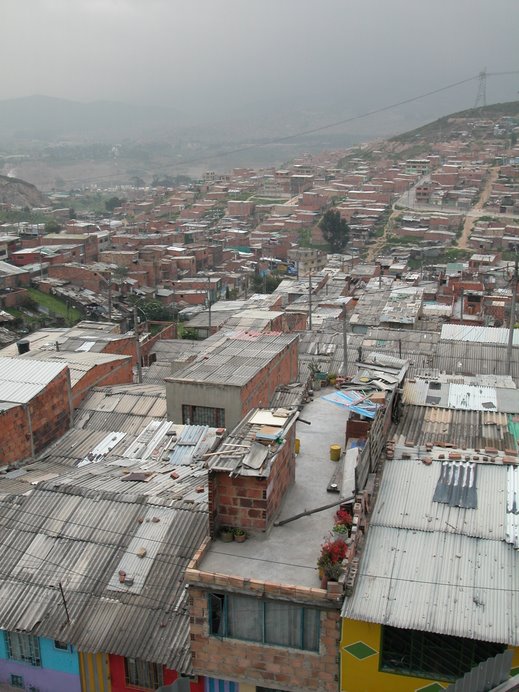 |
| A cartoon in El Tiempo asks what the point is of a Free Trade Agreement with China when almost everything is already imported from China, anyway. |
Colombia is courting China as a trade partner. Which makes one ask an obvious question: Why not leave bad enough alone?
 |
Great Wall motors
advertises in Colombia. |
Colombia has a huge and growing deficit with China. That may shift - but in an unhealthy way, as Colombia exports more raw materials like metals, coal and oil to China and imports in return more manufactured goods, many of them cheap items of questionable quality. Colombia's streets are already getting clogged with cheap Chinese cars, which evidently have minimal environmental controls.
 |
Juan Manel Santos with a Chinese leader in China.
The headline says that China wants Colombian oil and coal. |
 |
Men play Chinese chess in a restaurant in central Bogotá.
Colombia has a tiny Chinese population, many of
whom come here as a way-station
to the United States. |
Colombia's National Association of Industries (Andi) opposes a possible free trade agreement with China, and for good reason. It would open wider the floodgates of cheap goods, making it impossible for Colombia's manufacturing sector to get on its feet.
An article written about the year 2005 by a student of Jorge Arboleda University pointed out China's "overwhelming" competitiveness in the production of clothing and shoes. According to the article, Chinese-made pants were sold in Colombia for less than 500 pesos, while similar Colombian-made items cost more than 4,000 pesos. The textile industry then employed directly and indirectly some 800,000 Colombians, according to the article.
More cheap Chinese goods will further devastate Colombia's industry, turning Colombia into a nation of shopkeepers trying to sell Chinese products to Colombians without the incomes to purchase them.
 |
| Colombia's growing trade deficit with China. |
China also wants to build a huge petrochemical pipeline and railroad lines to ship Colombia's oil and coal across the sea to fuel Chinese factories. While this would create useful infrastructure for Colombia, it would also create a huge debt to the Asian powerhouse, and commit Colombia to continue digging up and shipping out its natural resources for a long, long time.
 |
Home appliance stores in downtown Bogota. Many of there
products are from China, as is the truck parked on the street. |
How much space would such an arrangement permit for Colombia to protect its biodiversity? China, after all, hasn't been particularly careful at home, and they might expect an economic ally to apply the same standards.
(It's striking how similar China's relationship with the developing world is to that of the old colonial powers and the United States - but the same leftists who harshly criticized the developed capitalist world keep mum about China, because it's 'socialist.')
 |
A Chinese-made SUV in Bogotá. The next instant,
the vehicle accelerated and coughed out a trail of
diesel smoke. |
But there's something even more troubling about buddying up to China. China has demonstrated that an authoritarian government can keep its population quiet by providing strong economic growth and restricting basic freedoms, including freedom of speech.

That formula could be tempting to many Latin leaders weary of harsh criticism in the media and frequent street protests.
But that system is not only a bad thing, but also probably not realistic in Latin America, whose culture is so fundamentally different from China's.
 |
Chinese-made lightbulbs for sale near San Victorino.
Why can't Colombia make its own lightbulbs? |
By Mike Ceaser, of
Bogotá Bike Tours













































